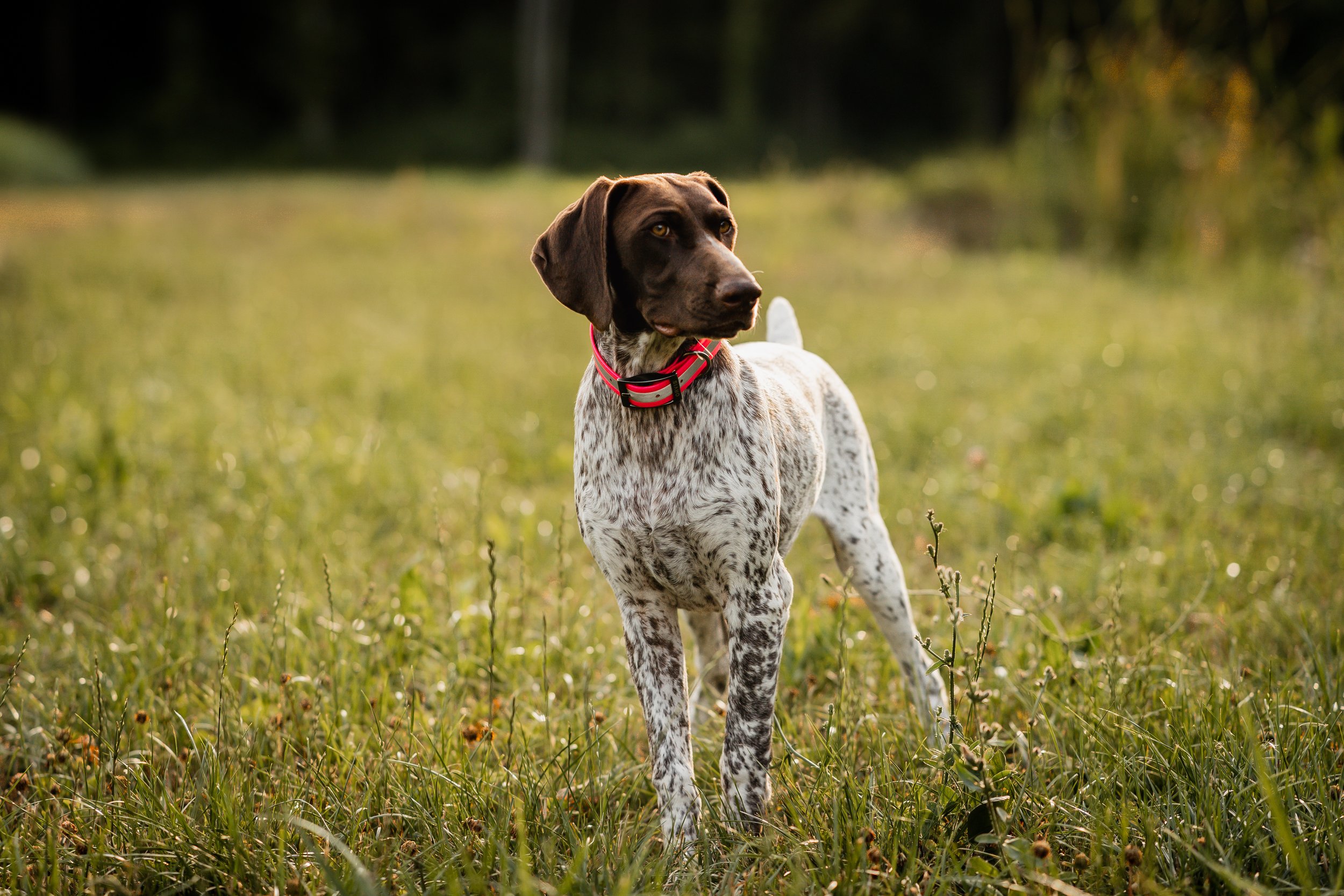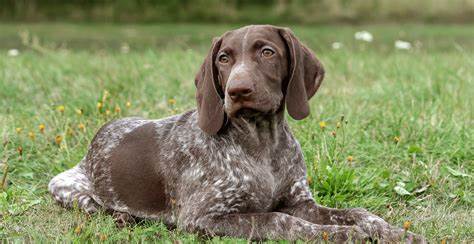
The German Shorthaired Pointer (GSP) was developed in Germany during the 19th century as a versatile hunting and companion dog. German hunters wanted a dog that could track, point, retrieve, and even dispatch game on both land and water. To achieve this, breeders crossed traditional German bird dogs with Spanish Pointers, Bloodhounds, and English Pointers.
The result was a well-balanced, athletic, and intelligent sporting breed capable of excelling in a wide range of hunting conditions. The GSP was first imported to the United States in the 1920s and was recognized by the American Kennel Club (AKC) in 1930, quickly gaining popularity among hunters and families alike.
The GSP consistently ranks among the top 10 most popular breeds in the United States, especially among active households and hunting enthusiasts. Its combination of intelligence, affection, energy, and versatility makes it an ideal dog for people who enjoy outdoor activities and canine sports.
The breed has also made a name for itself in obedience, agility, search and rescue, and dock diving, showing off its ability to perform in both professional work and playful family environments.
The GSP is a medium to large-sized dog, admired for its sleek, athletic body and striking coat patterns.
• Coat: Short, dense, and water-resistant with a firm texture.
• Color:
o Liver (solid or with white), liver and white patched, ticked, roan, and occasionally black and white.
• Size:
o Height: 21–25 inches (53–64 cm)
o Weight: 45–70 lbs (20–32 kg)
• Head & Expression: Clean-cut head with a long muzzle and bright, alert eyes that reflect its intelligence.
• Ears: Broad and flat, hanging close to the head.
• Tail: Usually docked in the U.S., carried horizontally or slightly raised.
• Body: Strong and streamlined—built for endurance and speed.
The GSP is known for its boundless energy, affectionate nature, and versatile working ability.
• Energetic and Playful: Needs regular exercise and thrives in active households.
• Affectionate and Family-Oriented: Bonds closely with its family and enjoys being involved in daily life.
• Intelligent and Trainable: Learns quickly and excels in obedience, but can be restless if under-stimulated.
• Versatile Hunter: Skilled in tracking, pointing, flushing, and retrieving, on both land and water.
• Sociable with Other Pets: Friendly when socialized early, though prey drive may require caution with smaller animals.

Ideal for outdoor enthusiasts, hunters, or active families, the GSP offers versatility, loyalty, and high intelligence.
• All-in-One Sporting Dog: Does it all—hunt, track, retrieve, and swim.
• Eager to Please: Thrives with structured training and consistent attention.
• Excellent Family Pet: Gentle with children and friendly with visitors.
• Athletic and Agile: Perfect for jogging, hiking, swimming, and dog sports.
• Easy Coat Care: Sleek coat requires minimal grooming.
This breed needs daily activity, mental stimulation, and strong bonds with its humans.
• Training:
o Start young with obedience and field training.
o Use positive reinforcement and variety to keep sessions fun.
• Exercise:
o Requires at least 1–2 hours per day—running, fetching, swimming, or hiking.
o Loves interactive play and off-leash time in safe areas.
• Grooming:
o Weekly brushing to remove loose hair and dirt.
o Bathe as needed; check ears and nails regularly.
• Nutrition:
o Feed high-quality food suitable for active, medium-to-large dogs.
o Watch for overfeeding, especially in off-seasons.
• Companionship:
o Not suited to long periods of isolation—needs social interaction and mental challenges.

GSPs are generally healthy, with a lifespan of 12–14 years, but like all breeds, they may be prone to:
• Hip Dysplasia
• Bloat (gastric torsion)
• Eye Issues (like entropion)
• Von Willebrand’s Disease (a bleeding disorder)
• Lymphedema (rare)
Regular vet checkups and choosing reputable breeders who perform health testing are essential for long-term wellness.
Compared to the Labrador Retriever, the GSP is more high-strung and agile, with stronger prey drive. It’s more active than a Vizsla, though both share affectionate natures. It’s also more versatile and independent than a Golden Retriever, and more sensitive and focused than the English Pointer.
If you live an active lifestyle, love the outdoors, and want a dog that will keep up with your adventures, the GSP could be your ideal companion. It's perfect for homes with space, structure, and time to devote to exercise and training.
Not recommended for those with sedentary lifestyles or without the time to meet its mental and physical demands.
United Pet Club connects you with trusted breeders, adoption options, and expert guidance to help you raise a healthy and happy GSP. Whether you’re a hunter or a family seeking an energetic and loving dog, the German Shorthaired Pointer is ready for the challenge.